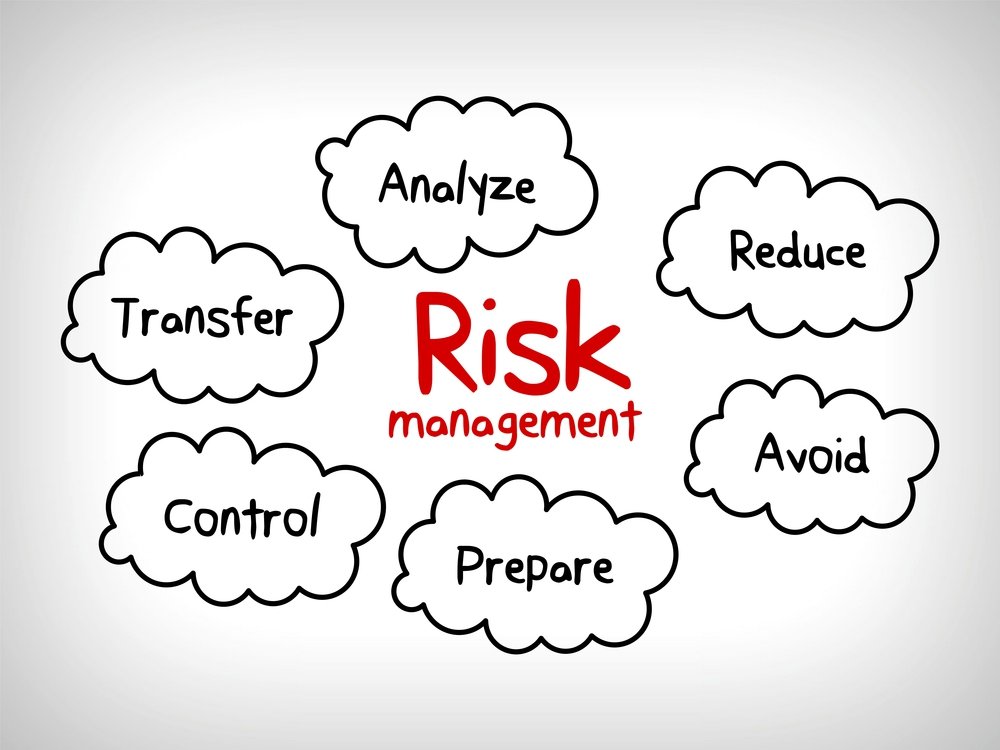The Crucial Importance of Risk Management in Monetary Decision Making
The Crucial Importance of Risk Management in Monetary Decision Making
Blog Article
Why the Importance of Risk Management Can not Be Neglected in Today's Economic situation
In today's rapidly advancing financial landscape, the role of Risk Management has actually become crucial. This increases an essential concern: can the importance of Risk Management in guaranteeing stability and sustainability be overlooked?
Understanding the Idea of Risk Management
The Duty of Risk Management in Today's Economy
Having grasped the concept of Risk Management, we can currently discover its duty in today's economic climate. In the context of an unforeseeable financial landscape marked by fast international occasions and technological changes, Risk Management ends up being a necessary critical element, adding to the security, sustainability, and total resilience of economies on both a macro and mini range.
The Effect of Disregarding Risk Management
Overlooking Risk Management can cause alarming repercussions for any kind of organization or economic climate. When potential threats are not identified, analyzed, and mitigated, companies expose themselves to frequently considerable and unforeseen damages. These can materialize as financial losses, reputational damage, functional disturbances, or perhaps legal difficulties. In today's unstable financial environment, an unforeseen crisis can quickly intensify, leaving an ill-prepared company rushing for survival. The global monetary situation of 2008 functions as a stark suggestion of the devastating effect that overlooking Risk Management can carry the economic climate at large. Therefore, ignoring Risk Management not just endangers private companies yet can undercut the whole economic situation, highlighting the critical role played by efficient Risk Management in today's economic landscape - importance of risk management.
Key Components of Reliable Risk Management Techniques
Effective Risk Management methods focus on 2 vital parts: carrying out and determining potential risks reduction measures. To make certain the security and sustainability of a company, these aspects should not be ignored. In the adhering to conversation, these crucial aspects will be explored thoroughly.
Identifying Prospective Dangers
Why is determining possible threats important in any kind of Risk Management approach? Recognition of possible risks is the foundation of any efficient Risk Management strategy. It entails the methodical assessment of the service landscape, both external and inner, to reveal dangers that can hinder an organization's tactical objectives. Recognizing possible dangers allows organizations to expect issues, rather than just respond to them. This positive method empowers businesses to manage uncertainty with self-confidence, by highlighting locations that call for more focus and planning. It also allows them to prioritize resources efficiently, concentrating on threats that could have the most substantial effect on their procedures. In general, the process of determining potential dangers is an essential action in cultivating company durability and advertising sustainable growth.
Applying Mitigation Procedures
Navigating via the volatile organization waters, companies get started on the crucial journey of implementing mitigation actions as component of their Risk Management methods. These procedures, made to lower the influence of possible risks, create the backbone of a robust Risk Management strategy. They include different methods, including moving the Risk to one more celebration, staying clear of the Risk, lowering the unfavorable effect or probability of the Risk, or even accepting some or all the effects of a specific Risk.

Situation Researches: Effective Risk Management in Method
In spite of the intricacies entailed, there are numerous circumstances of efficient Risk Management in technique that show its critical function in company success. Boeing, the aerospace titan, handled to mitigate the Risk of rising and falling currency rates by hedging versus the buck using onward agreements. One more example is Toyota's feedback to the 2011 Japan earthquake. The automaker promptly developed a danger Management group that minimized manufacturing downtime by recognizing different vendors. In a similar way, in the economic market, Goldman Sachs weathered the 2008 economic image source meltdown with a durable Risk Management program that expected the subprime mortgage crisis. These circumstances underscore that successful Risk Management can not just shield organizations from prospective threats but also enable them to take possibilities.
Future Fads in Risk Management: Adjusting to a Dynamic Economy
Looking in advance, the landscape of Risk Management is poised for substantial adjustments as it adjusts to a dynamic economy. Technological innovations are anticipated to reinvent the area, with automation and man-made intelligence playing a crucial role in Risk recognition and mitigation. At the same time, the boosting complexity of international markets and the unpredictability of geopolitical events are making Risk Management much more challenging.
Final thought
In verdict, my response Risk Management plays a crucial role in today's interconnected and volatile economy. As the economy continues to evolve, so must risk Management strategies, underscoring its continuous value in an ever-changing organization landscape.
A proper Risk Management approach is not regarding removing dangers entirely - a task almost check my reference difficult in the unpredictable globe of organization. Therefore, ignoring Risk Management not just threatens specific companies however can undercut the whole economic situation, underscoring the essential duty played by reliable Risk Management in today's financial landscape.
Reliable Risk Management approaches revolve around two key components: identifying potential risks and implementing reduction steps.Why is recognizing prospective risks critical in any type of Risk Management strategy? They include various methods, consisting of transferring the Risk to one more event, avoiding the Risk, reducing the adverse impact or probability of the Risk, or even accepting some or all the consequences of a certain Risk.
Report this page